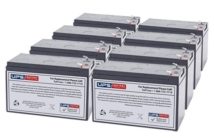A product which promises to provide several benefits to its users must go through rigid experiments to ensure that it will work according to what it is expected to do. One of the many things that promise advantages to make life easier is the Lithium-Air battery (Li-Air / Li-O2). This type of battery has higher energy density, surpassing what Li-ions can provide.
Now, we are going to discuss all the types of Li-Air battery and are going to assess as to which one is the most beneficial type.
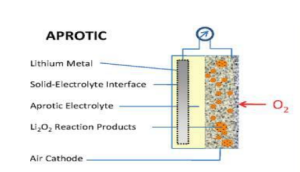 Aprotic Li-Air Battery
Aprotic Li-Air Battery
An aprotic Li-air battery is typically composed of a metallic lithium anode, porous O2 breathing cathode, and lithium salt in an organic solvent. An aprotic Li-air battery may be charged for reuse. However, the downside of this type of battery is that the Lithium Peroxide (Li2O2) produced in the negative charge is insoluble in the organic electrolyte, resulting in clogging and expansion of size, thus, the need to have it replaced often. Aprotic Li-air can also ignite, making it a flammable type of battery.
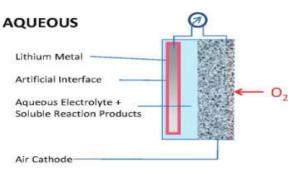 Aqueous Li-Air Battery
Aqueous Li-Air Battery
Another type of Li-air battery is the Aqueous. The name itself explains the structure – it has water inside the battery! It uses aqueous as its electrolyte while having the lithium metal as its anode, and the porous carbon as its cathode. This type of Li-air battery needs a partition, which can be a glass or a lithium-conducting ceramic, because the particles on the anode reacts with the water violently.
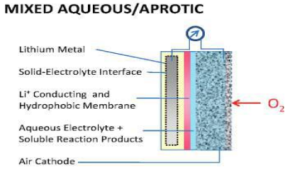 Mixed Aqueous/Aprotic Li-Air Battery
Mixed Aqueous/Aprotic Li-Air Battery
Because aprotic and aqueous types of batteries each have limitations, a mixture of the ideas was promoted. Here, the anodes are on the aprotic side, while the cathode is on the aqueous side. There is still the presence of the li-conducting ceramic or a glass to separate the water from the aprotic side and anode.
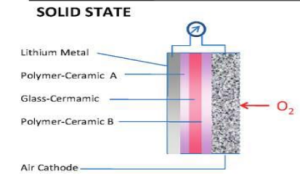 Solid State Li-Air Battery
Solid State Li-Air Battery
The solid state type of Li-air battery eliminates chances of ignition, thus, it is not flammable. It uses a lithium anode, a porous-carbon cathode, and an electrolyte made of a ceramic, glass or ceramic-glass. Polymer-ceramic composites are in between the anodes and electrolytes, and electrolytes and cathodes. The arrangement is intended to lower the impedance. Regrettably, it is also not a perfect type of Li-air battery because its downsides include low conductivity of most glass-ceramic electrolyte.
The Li-air battery has to go through many alterations so as to acquire its optimum performance. It still faces many challenges because each type has its own downside. Nonetheless, we cannot deny the fact that Li-air batteries can surpass the performance of Li-ion and other types of batteries.
*Image Credit: Israel National Research Center for Electrochemical Propulsion
Related Articles:



